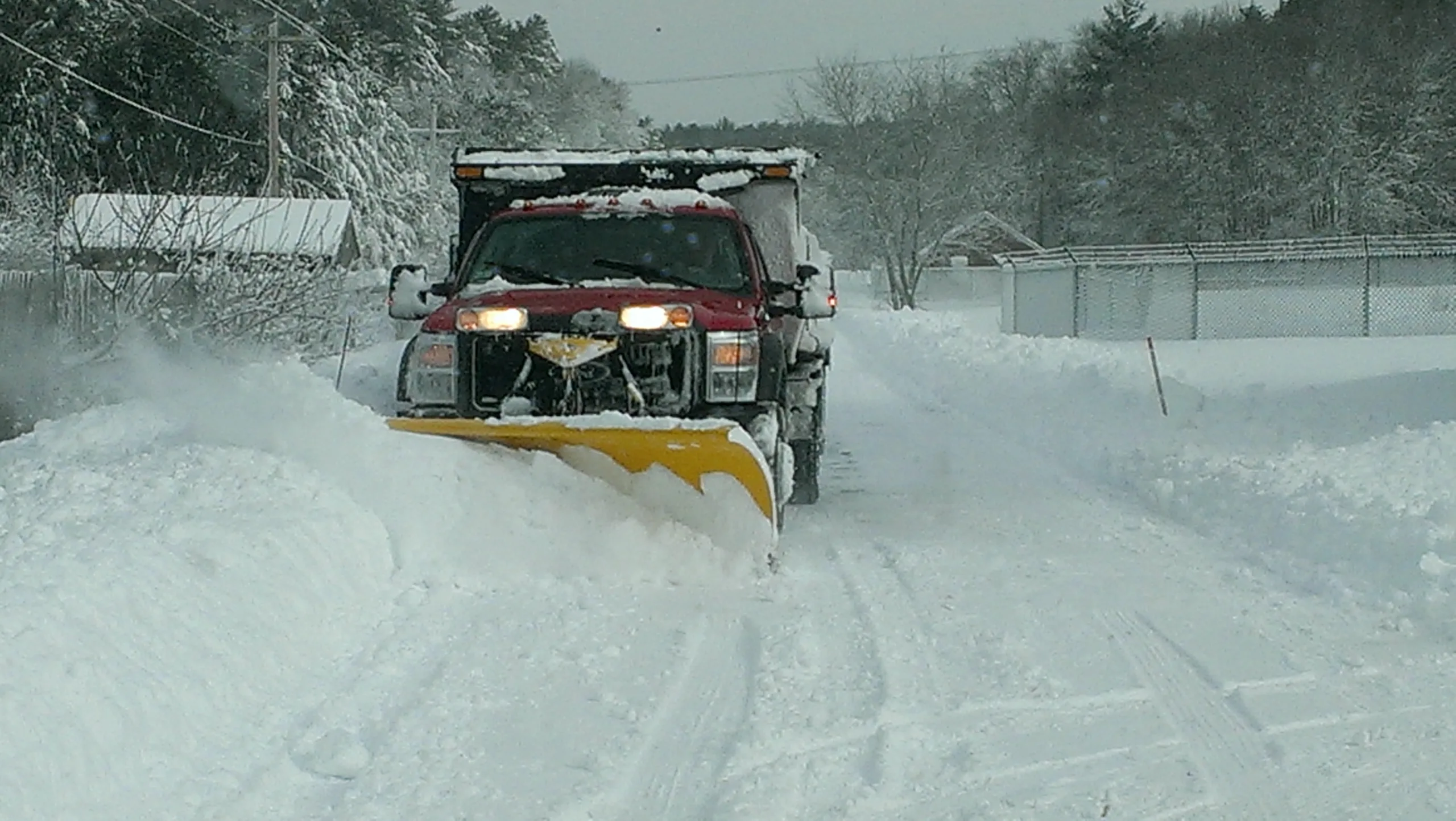Anti-Icing Operations
In East Bridgewater, de-icing operations will begin when the road conditions are deemed hazardous by the Director of Public Works or his designee. During off business hours the police department may advise the department of hazardous conditions.
Typical anti-icing operations require 5 trucks. Coverage of the entire town takes approximately three hours. The priority is to treat main roads first, followed by secondary and through roads. Sub-divisions and dead ends are treated last. It may take up to three hours for a truck to treat any given road.
In the event of a de-icing materials shortage, this policy will be revised accordingly.

Snow Plowing Operations
The approximately 90 miles of roadway and municipal buildings the town is responsible for maintaining are divided into 14 routes. The Town of East Bridgewater has 20 snow removal units ranging from four wheel drive pick-up trucks to large dump trucks and several pieces of heavy equipment that may be assigned to these routes. An additional 40 pieces of contractor equipment are required to supplement the town’s removal equipment.
Plowing operations begin after roadways have been treated and snow has accumulated to a depth of at least three inches on the roadway. The priority for plowing operations begins with clearing main and through roads followed by residential sub-divisions and dead ends. During operations it may be necessary to plow the roads several times during a storm. During a major storm, keeping main and through roads cleared will be priority. Residential sub-divisions and dead ends will be addressed when main roads are deemed passable.
In the event of an emergency, the Department will respond immediately with all available equipment to provide access for police and fire departments, regardless of the classification of roadway or its priority.
Each snowfall must be pushed off the roadway as far as possible to provide sufficient room along the road shoulder for safe travel and anticipated successive storms. This prevents the travel way from becoming to narrow and unsafe.
Mailboxes and other objects in the Road Layout
During plowing operations, mailboxes, fences and other objects in the road layout may be damaged. Most times this damage is a result of the weight of the snow coming off the plows and hitting the objects. It is uncommon for the plow to physically strike the object. The Department is not responsible for any damages to these objects from the storm weather conditions during normal plow operations.
Sidewalks
It takes approximately six hours to plow the sidewalks on all main and secondary through roads. Priority will be given to sidewalks in the downtown area and within the East Bridgewater Public School’s approved walking routes. During major snow storms outlying sidewalks may not be plowed. Sidewalks in residential sub-divisions and outlying areas will not be plowed at all regardless of the amount of snowfall.
Trash Bags / Recycling Containers
Residents are reminded not to place bags / containers along the roadway or sidewalk until snow plowing operations are complete. The department is not responsible for damage or clean-up of rubbish or recycling left in the road or sidewalk during plowing operations.
Vehicles parked in the Street
Vehicles that are parked in the public way and obstructing snow removal operations, this includes de-icing operations, may be towed at the vehicle owner’s expense.
Discharge of Liquid onto Town Way
No person shall pipe or otherwise deposit in or on upon any public way or way to which the public has a right to access, any water or other substance i.e.; snow, ice or leaves which may freeze and thereby create a hazardous condition per Article 22, a Town By-Law which was voted and passed at the Annual Town Meeting held on March 4, 1968 and approved by the Attorney General’s Office on July 1, 1968. This by-law reads as follows: No person shall pipe or otherwise deposit in or upon any public street or place, any water or other substance which may freeze and thereby create a hazardous condition.”
